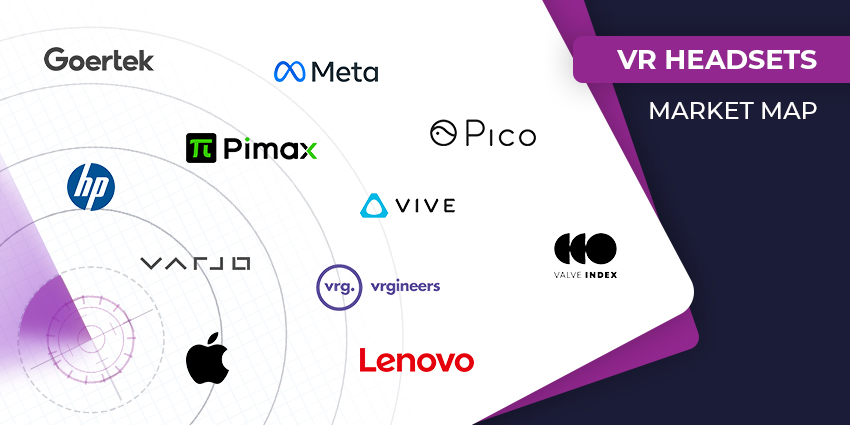Ever since 5G technology has started to roll out to telecommunications companies in full force, we’ve begun to see the real impact that the telecom industry can have on the XR environment.
For telecommunications brands, extended reality technology isn’t just a great way to improve training, collaboration, and everyday processes. The XR landscape is also a new avenue of opportunity for partnerships with leading companies on life-changing connections.
Working alongside other XR innovators, telecoms companies can power unbelievable technological achievements for groups and companies all around the world.
One recent example of this is when T-Mobile, a leading telecommunications brand, leveraged its 5G ecosystem in partnership with HTC Vive, Fisk University, and Victory XR.
The partnership allowed the group to deliver a state-of-the-art VR cadaver laboratory to Fisk University in Nashville Tennessee. Here’s what happened when these incredible companies joined forces in 2021.
Delivering New Opportunities for University Students
Located in Tennessee, Nashville, Fisk University is one of the leading HBCU (Historically Black College and University) locations in the country. Recently, the university has been emerging as a technology leader among other colleges, working hard to bring innovative new experiences to their students, as a way of accelerating learning opportunities.
According to Dr. Vann Newkirk, the President of Fisk University, the educational facility is combining the best aspects of in-person and virtual learning to unlock the future of education. However, they couldn’t have achieved this without access to T-Mobile’s technology.
In the past, Fisk University had avoided purchasing cadavers due to high maintenance issues and costs. However, with T-Mobile and HTC Vive, they’ve been able to create a state-of-the-art scientific learning experience within a virtual environment.
Because virtual cadavers don’t degrade or deteriorate, they offer unlimited value to students. Additionally, over time, it’s possible to add new specialities to the software, such as comparative learning and surgical procedures.
Fisk University already had access to T-Mobile’s Ultra Capacity 5G network when it decided to make the shift into the future of XR. This meant the group didn’t have to build any specific new networks for the use case.
The Opportunities Created by 5G
Collaborating with T-Mobile, HTC Vive, and other industry leaders, Fisk University created an environment where students could examine the internal organs of human systems with ease. The fast-paced 5G connection even means professors can remove organs from a virtual body and pass them around for students to hold and explore.
The collaboration also allows Fisk University to offer a wider range of VR history courses, which allows students to visit locations which they could previously only learn about through books and videos. Some of the places already being explored by the University include the Montgomery Bus Boycott and the Lorraine Motel in Memphis.
Fisk University provides access to these virtual experiences through HTC VIVE headsets, where students can immerse themselves in a lab custom-made by the VictoryXR team using the Unity real-time 3D platform.
The VR cadaver laboratory runs on the T-Mobile Ultra-Capacity 5G network, which delivers the low latency and high capacity required for running a bandwidth-intensive application for an entire classroom of students at the same time.
The core 5G technology provided by T-Mobile allows for a higher definition of graphical detail, so students can better discern important parts of an organ or body part, such as arteries and veins. The low-latency nature of the 5G ecosystem also means multiple users in a classroom can experience the same events at the same time.
All the while, the all-in-one VR experience offered by the VIVE Focus 3 ensures the students can make the most of their learning experience, with superior audio, high-definition visuals, and extensive inside-out tracking and controllers, all powered by the 5G performance of T-Mobile.
Unlocking New Learning Opportunities
Such a powerful VR experience wouldn’t have been possible for students at Fisk University without the 5G internet connection. Even the standard broadband capabilities of the university weren’t suitable for such a high-bandwidth application. T-Mobile’s Ultra-Capacity 5G network, therefore, forms the foundations of the University’s new journey into the future of learning.
The headsets in the educational facility can connect over Wi-Fi to a 5G router, which taps into the 5G network and allows for the high-speed, low-latency experience.
Combined with T-Mobiles 5G, the cadaver lab is capable of supporting as many as 20 students at the same time. T-Mobile believes the high-bandwidth and low-latency networks offered by telecom providers in the new age of XR will power the future of modern classrooms.
This case study is an excellent example of how future telecoms companies can open up new avenues of opportunities by working alongside XR technology innovators.
In the educational environment, the introduction of these new technologies allows universities to immerse students inside of an engaging experience, where they can explore the human body, or historical environments like never before.
According to John Saw, the EVP of Advanced and Emerging Tech for T-Mobile, 5G is opening up endless opportunities for applications capable of better connecting to us our world, and helping us to explore and learn in ways we never considered before.
With one of the largest and fastest 5G networks in the country, T-Mobile believes they’re in the perfect position to start exploring new opportunities to fuel innovation.
Looking to the Future of XR and Telecoms
The connection telecommunications companies have to the XR environment goes far beyond unlocking new opportunities for internal collaboration and customer service. As this case study shows, carriers can discover new ways to empower their customers by mixing 5G connectivity with the power of extended reality, through partnerships with the right tools.
T-Mobile’s case study demonstrates a real-world use case for the combination of 5G telecom and XR technology in a forward-thinking environment.







